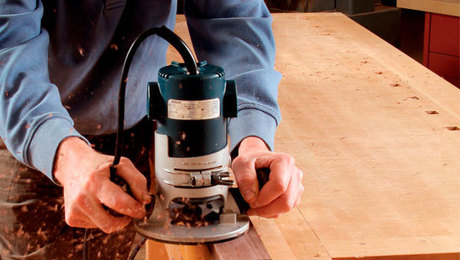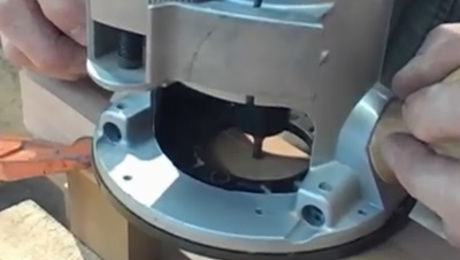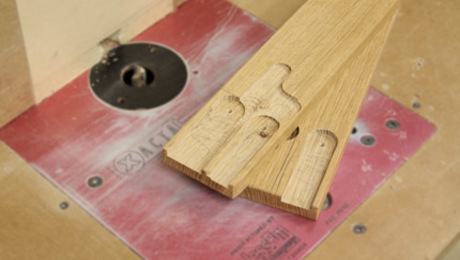Video: What the heck is a climb cut?
Climb cutting when routing can be confusing. In this video we try to clear up the confusion and show some tips for identifying a climb cut and avoiding it.There are some concepts in woodworking that are incredibly difficult to understand. Right at the top of that list is what happens as a router bit interacts with the wood you’re cutting. This doesn’t seem like a big deal, but this interaction informs so many aspects of routing—most importantly, which direction to push the router. If you get it wrong, you might wander into a dangerous climb cut.
There are tricks to figuring out which direction to cut. And sure, some may get away with doing it by feel. I haven’t struggled with direction in quite some time, but that doesn’t mean I fully understood what was happening. Considering how much time I spend wielding a router, it’s probably best for me to fully understand what is happening. I know I’m not alone. I’ve had the discussion with some of the biggest names in woodworking, and I’m not sure many of them really understood what is really happening when bit hits wood. The problem is that a router bit is tiny, and it’s spinning faster than we can fully comprehend. So for this video I created a model of a 5-inch router bit (you read that right) and using this unbelievably scaled up router bit, the interactions between bit and wood become pretty apparent. You’ll see!
 |
Climb-cutting: Don’t believe the naysayers |
 |
Router questions: What’s a climb cut? |
 |
Router accident is a great lesson in climb cutting |























Comments
Ben nice job on the enlarged visual and the visual cue of the direction of cut on outside and inside cuts. As pointed out in the linked articles, climb cutting is not inherently "dangerous" however and is a preferred technique for certain situations.
Also grain direction when template routing doesn't really have anything to do with climb cutting. You did a nice job explaining why on a single board edge you will need to route from different directions and with different bits to avoid tearout.
Thanks, Ben. That's one awesome router "bit" you made! This explains how to avoid climb cuts with a handheld router. Next, you should explain what happens with a climb cut on a router table.
I would love to see the size of your router table if you can mount that huge bit in it!
Cheers!
Bruce Grimes
Thanks Ben. Apparently size does matter!! Your visual aids were excellent and finally drove home for me what was really happening at the point of contact: bit to wood. Keep up the great work. regards, Mike Strange
Clear explanation, handy way of identifying non-climb cuts, amazing giant visual aid, and a way to avoid a climb cut when you think you might have to do one.
Mic drop. 🙂
Thanks, Ben.
Very nice video, Ben. A humble suggestion if you are explaining this again would be to use that Sharpie to draw an arrow on the top of your router to show the direction the bit is ALWAYS spinning. I very much appreciate the advice to use a top-bearing bit in one direction, and a bottom bearing bit in the other direction. I'd have just climb-cut and scared myself!
I have a router with that arrow embossed on the top of it. The problem is some aren't sure if that means the bit is spinning that way or if it is the direction you should move the router. Early on, I thought it was hinting at the direction.
Log in or create an account to post a comment.
Sign up Log in